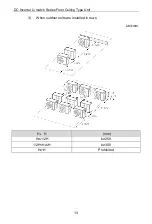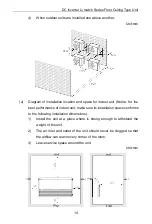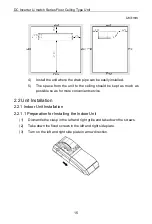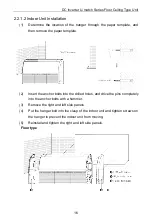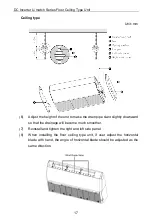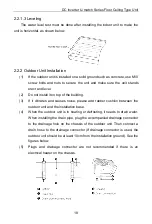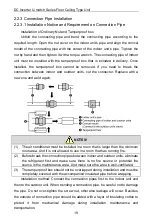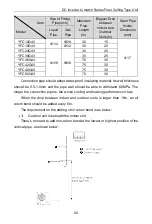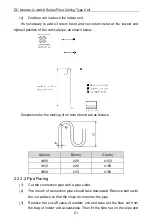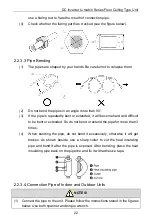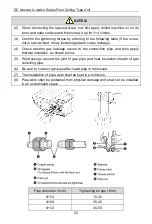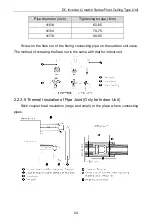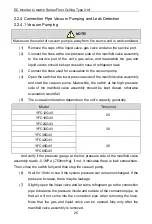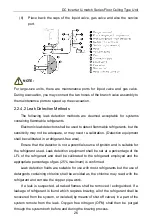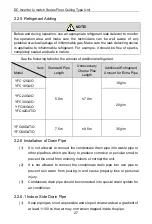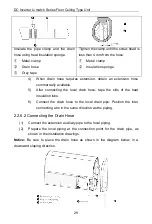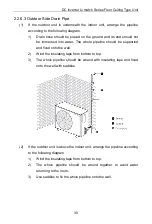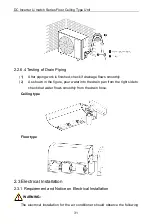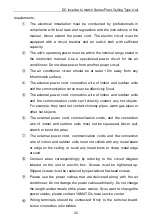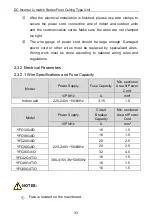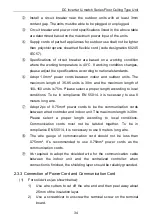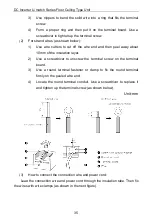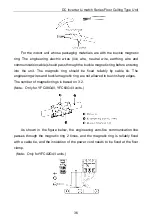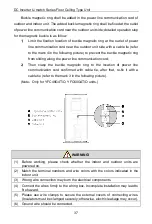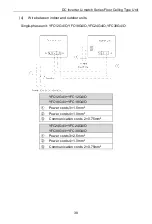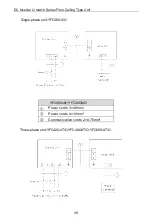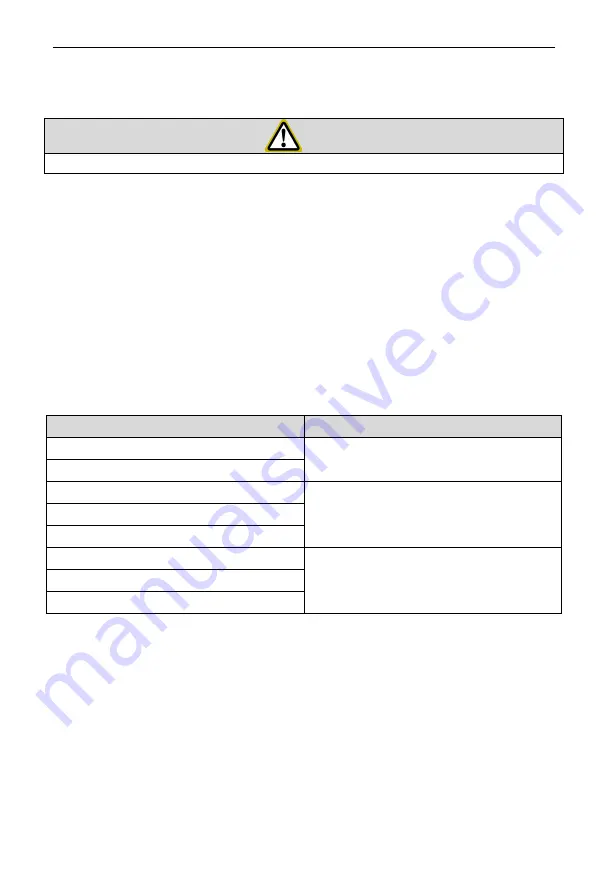
DC Inverter U-match Series Floor Ceiling Type Unit
25
2.2.4 Connection Pipe Vacuum Pumping and Leak Detection
2.2.4.1 Vacuum Pumping
NOTE!
Make sure the outlet of vacuum pump is away from fire source and is well-ventilated.
(1) Remove the caps of the liquid valve, gas valve and also the service port.
(2) Connect the hose at the low pressure side of the manifold valve assembly
to the service port of the unit’s gas valve, and meanwhile the gas and
liquid valves should be kept closed in case of refrigerant leak.
(3) Connect the hose used for evacuation to the vacuum pump.
(4) Open the switch at the lower pressure side of the manifold valve assembly
and start the vacuum pump. Meanwhile, the switch at the high pressure
side of the manifold valve assembly should be kept closed, otherwise
evacuation would fail.
(5) The evacuation duration depends on the unit’s capacity generally.
Model
Time(min)
YFC12G4/I
20
YFC18G4/I
YFC24G4/I
30
YFC30G4/I
YFC36G4/I
YFC42G4/I
45
YFC48G4/I
YFC60G4/I
And verify if the pressure gauge at the low pressure side of the manifold valve
assembly reads -0.1MPa (-750mmHg), if not, it indicates there is leak somewhere.
Then, close the switch fully and then stop the vacuum pump.
(6) Wait for 10min to see if the system pressure can remain unchanged. If the
pressure increase, there may be leakage.
(7) Slightly open the liquid valve and let some refrigerant go to the connection
pipe to balance the pressure inside and outside of the connection pipe, so
that air will not come into the connection pipe when removing the hose.
Note that the gas and liquid valve can be opened fully only after the
manifold valve assembly is removed.



